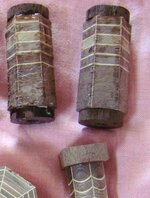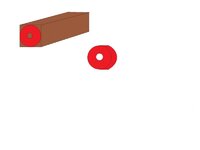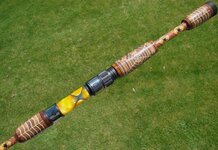Just to clarify some things. Please dont take this the wrong way, I'm not offended, and I dont intend to offend. Just want to keep the thread on a constructive path.
I rarely make statements like this, as it rubs against my modesty, but I have a supurb grasp of geometry, so my understanding of centering and alignment is not at issue. For example, the solution to the Herrignbone 360 just sort of popped into my head - I was actually trying to not think about it becasue it looked way too time consuming (for now). I did go ahead make a 1" section just to prove the solution. Point is that my conceptual understanding of what needs to happen is fine - it's something in the setup/execution/tool.
I'm a very meticulous person, and I like to tweak a tool to within an inch of it's life. Yes, I'm the guy who spends several days sanding his table saw top to flatten it. (used table saw - needed rust removal anyway - at least that's my excuse). I also do all my tool adjustments with a micrometer if possible.
I've aligned the tailstock using shims. I test the alingmnet by inserting a short bit and centering everything with the drive center. Then inserting a long bit to test if it's center aligns. Now, a crooked bit pretty much makes this impossible - so that is definately an issue - one I should have thought of, but you all are here to help with that

As far as turning round, I've mitigated the SS runout by making my own drive center - everything is marked so it gets mounted in the SS the exact same way every time. When I got the collet chuck I re-made the drive center. My drill chuck is also marked so it gets mounted the the MT the same way each time.
So, right now seems like adjusting the machine using a crooked bit is obviously inherently flawed, and the nature of the shop smith increases the challenge.
Next step is to get a straight bit and re-adjust, and get a short, stubby starter bit.
Although declaring the SS as inadequate for this task may end up the result, I'm not ready to decide that until I give this a go with a straight bit.




